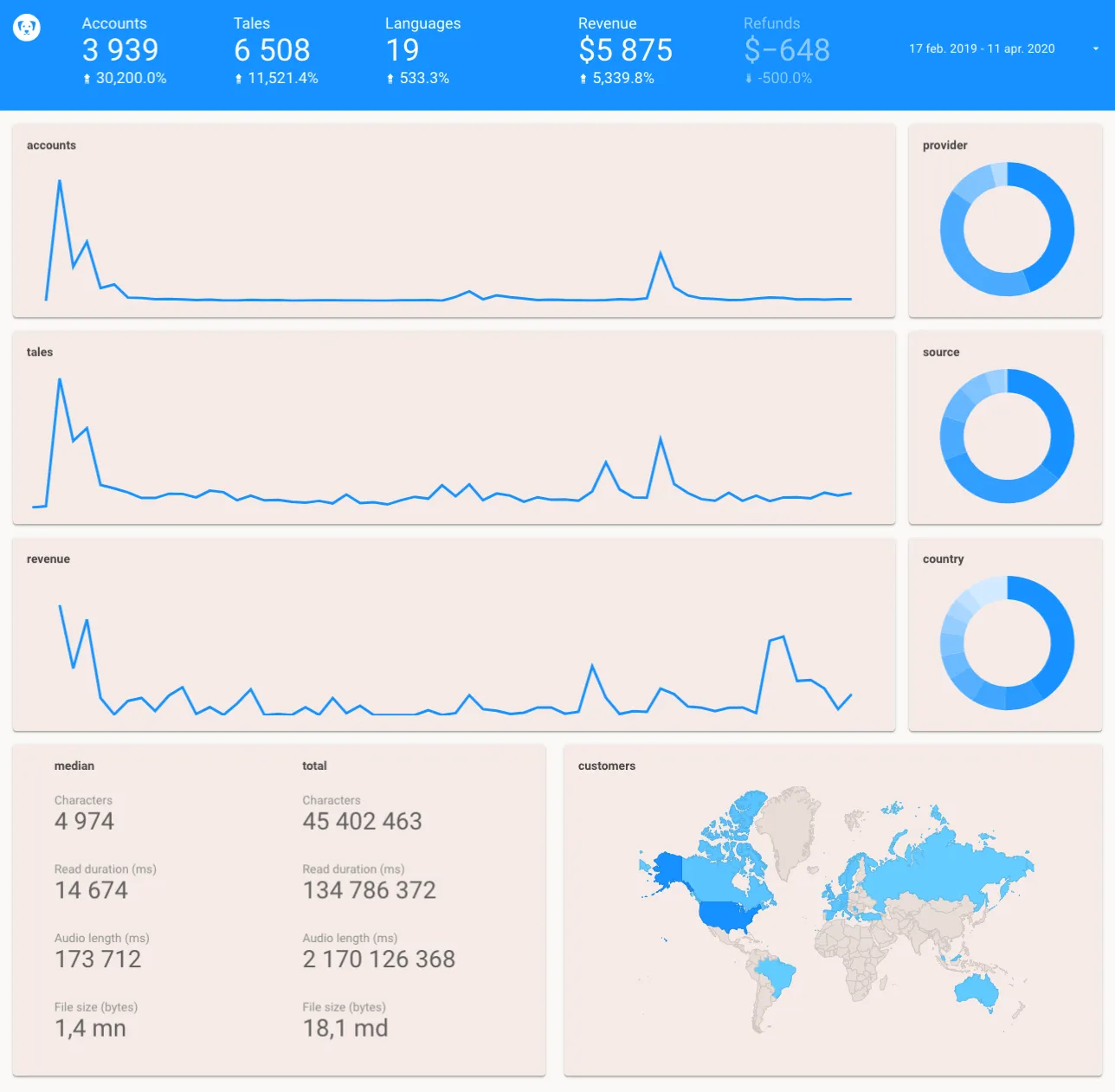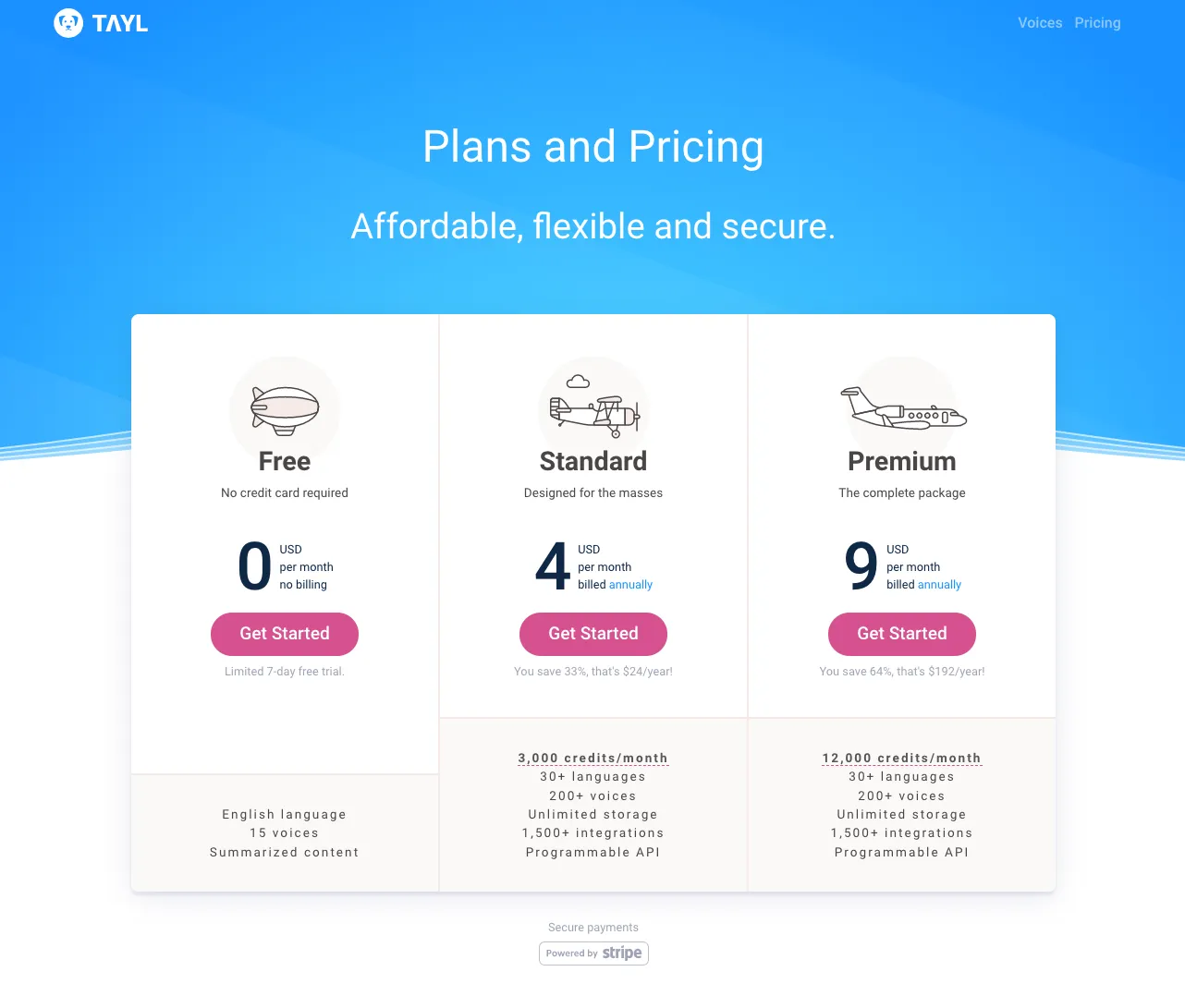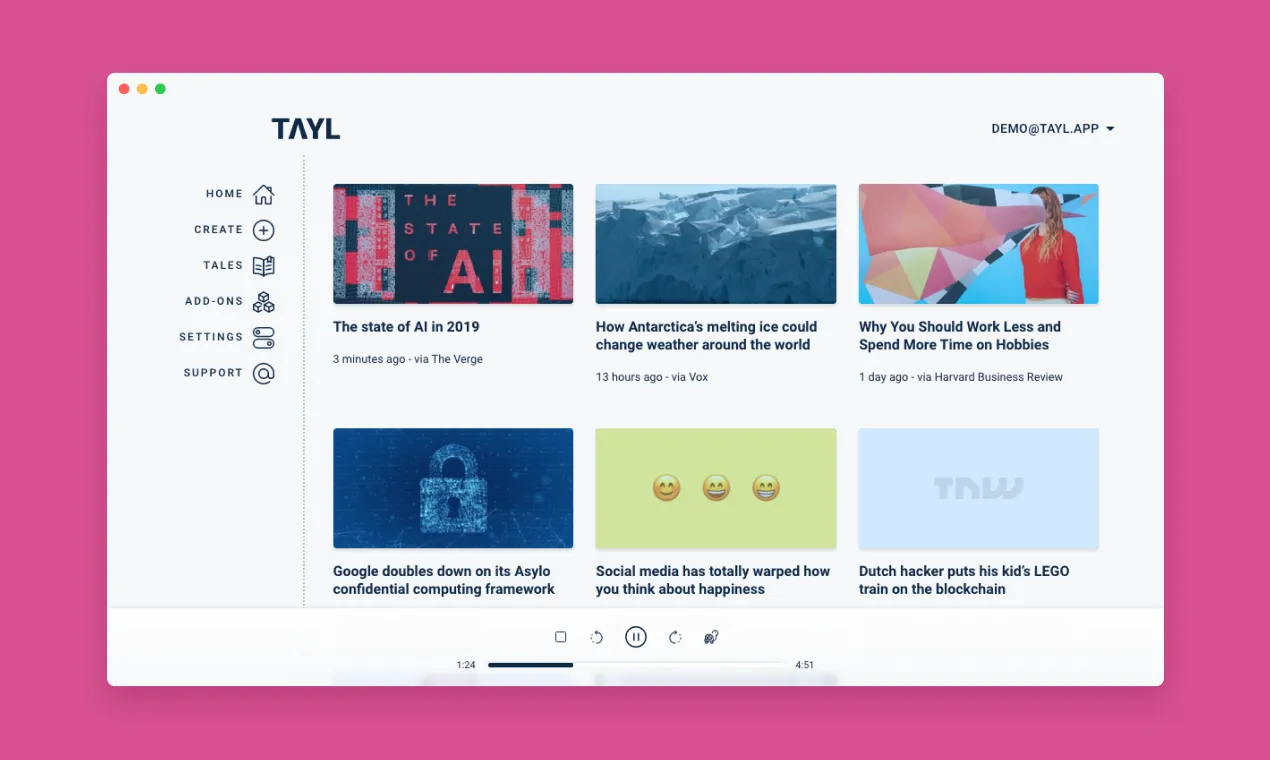An Indie Hacker's Learnings From Launching a B2C SaaS Company
About a year ago, I dedicated all my evenings and weekends to building a SaaS product I later named “TAYL” — short for Talk at You Later. What started as a duct-taped MVP turned into a profitable product within just three months of focused work. Along the way, I crafted a full graphical identity, a landing page, a web app, and browser extensions for both Chrome and Firefox. The driving force behind it all? Solving a problem I personally faced. That motivation kept me going.
I skipped the usual “start a business” tactics like market research and SWOT analysis, trusting that if others shared my problem, they’d appreciate a good solution. And so, I shipped quickly.
The Problem
Podcasts were my favorite companion during my daily bike commute. Combining exercise with learning and entertainment felt like a win-win. But there was a catch: sometimes, there just weren’t any new, interesting episodes to listen to. Meanwhile, my reading list kept piling up — pages and pages of content I wanted to dive into but never had the time for. Then it hit me! I had plenty of interesting things to read, and I had time to listen while commuting. Why not turn that reading list into audio?
The Solution
Luckily, I’d been exploring text-to-speech technology recently. Thanks to leaps in machine learning, these voices sounded way more natural than before. The plan? Automatically generate a podcast feed by combining bookmarking with a high-quality text-to-speech engine. I built the MVP in about a day and started using it right away. A few months later, I launched it online as a full SaaS product.
TAYL lets you bookmark websites and save text content to your reading list. Every saved bookmark gets an audio version, playable through the web app, mobile apps (iOS and Android), or as a podcast.
Thanks to powerful hardware and advanced machine learning, TAYL delivers natural-sounding narrations in over 30 languages and 200 voices — all produced in just minutes.
A Year in Review
TAYL officially launched in March 2019, and I thought it was the perfect time to reflect on what’s happened since. The first user signed up just minutes after I posted the product on Product Hunt. Within the first week, 1,155 people created accounts. By week three, that number had surpassed 2,000. The buzz came entirely from Product Hunt and word of mouth — I didn’t do any marketing.

Above is a snapshot of the Open Startup dashboard for tayl.app. For a closer look at the numbers, check out TAYL’s Interactive Dashboard. That big spike at the start? That’s the Product Hunt launch effect in full force.
The First Paying Customers
The first paying customer subscribed on launch day. Within the first week, subscriptions worth over $700 had been sold. That was surprising for a B2C service with a premium price tag. Initially, there was only one pricing plan: $25/month billed monthly or $108/year (equivalent to $9/month) billed annually. No free plan — just a limited 7-day free trial. I thought a higher price would make coupon deals more appealing (“Save 50%” sounds better than “Save 20%”). I didn’t spend much time estimating user costs before launch; prices were set to avoid unpredictable expenses and ensure healthy profits.
Rethinking Plans and Pricing
In the weeks after launch, I was busy fixing bugs, building mobile apps for iOS and Android, and answering support emails. By summer, I had gathered and reviewed user feedback. The top complaint? The price was too high. The second? The free trial was too limited to truly experience the product. People expect things online to be free or at least feel free to try. So, it was clear the business model needed tuning — with real data on running costs and a better sense of what users were willing to pay.

After crunching the numbers, I introduced a credits-based subscription model. Each month, users get a set number of credits to spend on either standard or premium voices (the latter being higher quality). I also launched a more affordable “Standard” plan alongside the new credits system. It offers the same features as the Premium plan but comes with about a quarter of the credits. That’s still 5-7 hours of audio per month — enough for most users, based on usage stats. And if you need more credits, you can keep using them and get billed for the overage at the end of the month.
The “Standard” plan has been live for 7 months now. As you can see in the chart below, it’s steadily catching up to — and soon may surpass — the Monthly Recurring Revenue (MRR) of the Premium plan. It has lower churn and a notably higher conversion rate. Interestingly, many users start with the Standard monthly plan and later upgrade to an annual Standard or Premium plan — all without me having to push upsells.
Right now, the Premium plan is trending slightly down, while the Standard plan is moving up.
Launching TAYL 2.0
After a couple of months spent fixing bugs, adding features, and building iOS and Android apps, I decided it was time for a “2.0” launch. The release notes included:
- Support for more voices and languages (over 30 languages and 180+ voices).
- Zapier integration — connect TAYL with 1,500+ apps and services, no coding needed.
- Native smartphone apps for both iOS and Android.
- The new “Standard” plan — a more affordable option with the same features as Premium.
If the first launch was a hit, the TAYL 2.0 Product Hunt launch was, well, a bit underwhelming. Just a few upvotes and a small traffic bump. The newsletter sent to 3,000+ users converted only a handful to the new plan. I had spent many hours building cool new features, but few got to experience them. It was a little discouraging.
Around the same time, I shared the product on Reddit — on /r/SideProject as a story about building a profitable SaaS and on /r/UsefulWebsites as an app that turns text into podcasts or audiobooks. Those posts brought some traffic and honest feedback from Reddit’s famously grumpy users, but not many converted to paying customers.

Luck played a big part in the first launch’s success. Not only did the Product Hunt community see it thanks to upvotes, but an editorial about TAYL was featured in their newsletter. Relying on luck isn’t really my style, so I knew something had to change. Instead of chasing short bursts of attention from posts on other sites, I shifted focus to long-term efforts like improving the product, SEO, and keeping existing customers happy. It’s too early to say how this shift will play out, but it feels right. There’s something comforting about doing things in a thoughtful, controlled way.
Writing this blog is part of that new strategy.
Learnings From Building a SaaS
If you’re an entrepreneur or indie hacker building your own product — or thinking about starting — here are some insights I gathered from my journey with TAYL. I hope they help you! And if you’ve been through something similar, I’d love to hear your learnings on Twitter.
- Build what inspires you — You know you’ve found the right product when you feel restless because it’s not finished yet. Create something that truly motivates you. That way, procrastination rarely stands a chance, and you always know what to focus on.
- Start small, get results early — It really helps to build a duct-taped MVP quickly. I got about 80% of the final product’s experience in just 1-2 days. It was rough around the edges but enough to share with friends and get feedback. Having something working early makes the project feel more manageable and the end goal more achievable.
- Aim for okay, not perfect — Without setting a launch deadline, I might never have released TAYL. At launch, I wasn’t thrilled with the product. But the launch itself isn’t the big deal — what matters is what happens afterward. Aim for a product that’s good enough to attract a few users and gather feedback, not a perfect launch. Use it as a learning opportunity, not a growth milestone.
- Use your toolbox — Every project starts with research into tools and frameworks. I usually try a few and find pros and cons. In the end, I stick with tools I know well. Avoiding the shiny new thing gives you a head start — no learning curve and clear limits. Trust me, it’s demoralizing to realize later that your creativity was limited by your toolbox and that you have to start over.
- Listen to your users — At launch, TAYL had an automated survey sent to every user who deleted their account. It’s still live today. Asking why someone stops using your product can sting your ego but offers some of the best insights. Early on, I learned pricing didn’t match the value users expected.
TAYL is now one year old and starting to mature in features and stability. My next focus is on long-term growth. The systems run smoothly and scale well. The new subscription and pricing model seem to strike the right balance between value and cost. I’m excited to see if steady MRR growth picks up speed with my long-term marketing efforts.
If you haven’t heard yet, I’m also working on a B2B version of TAYL. It’ll be a new product with similar features but aimed at businesses. If you run a blog or online newspaper and want to beta test, please reach out! And if you’re curious for more updates like this on TAYL and my other projects, sign up for the newsletter below.
PS! Want to give TAYL a try? Head over to tayl.app and listen to websites in a whole new way. Use the discount code UM_BLOG for 30% off your first payment — enjoy!